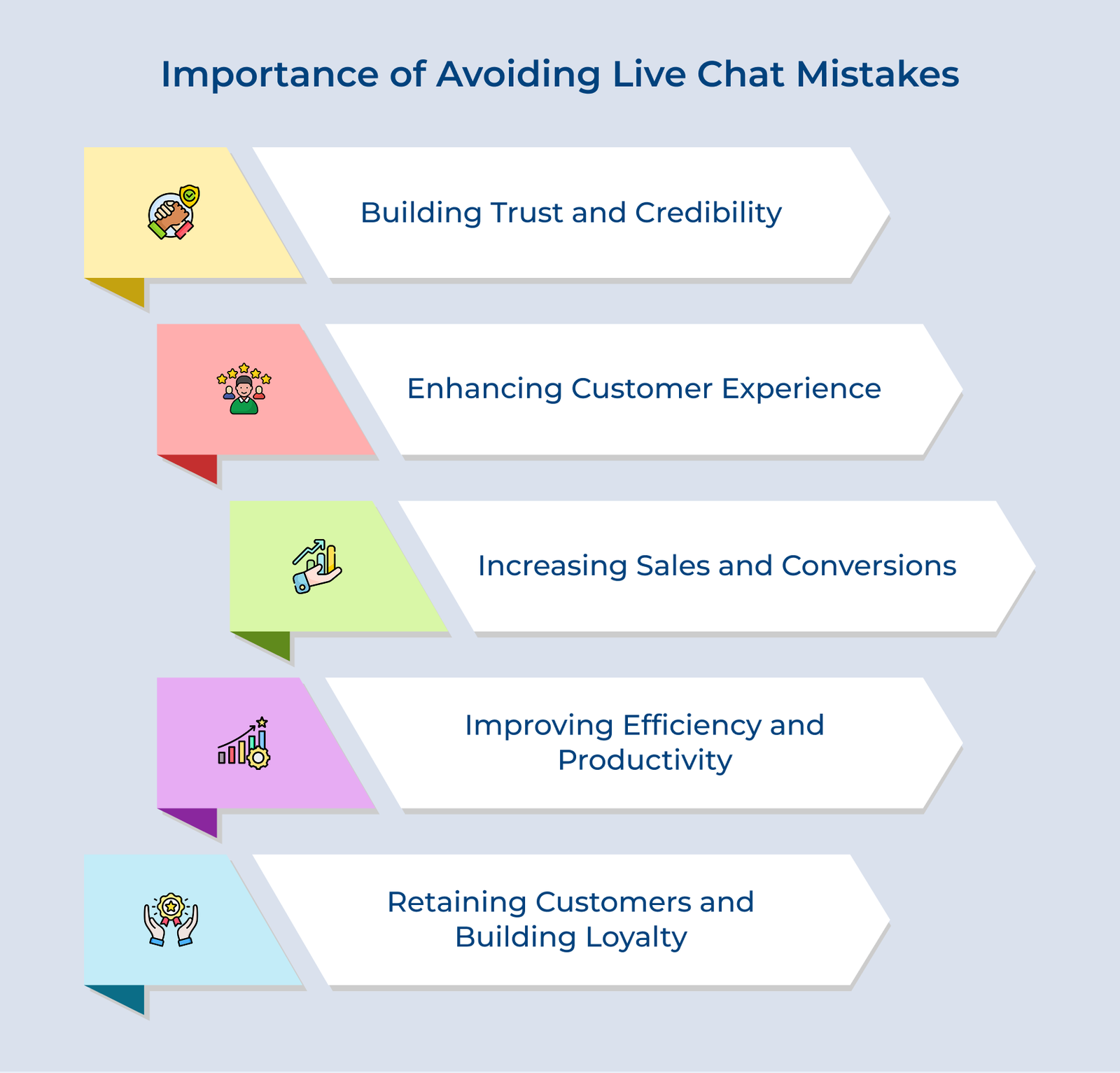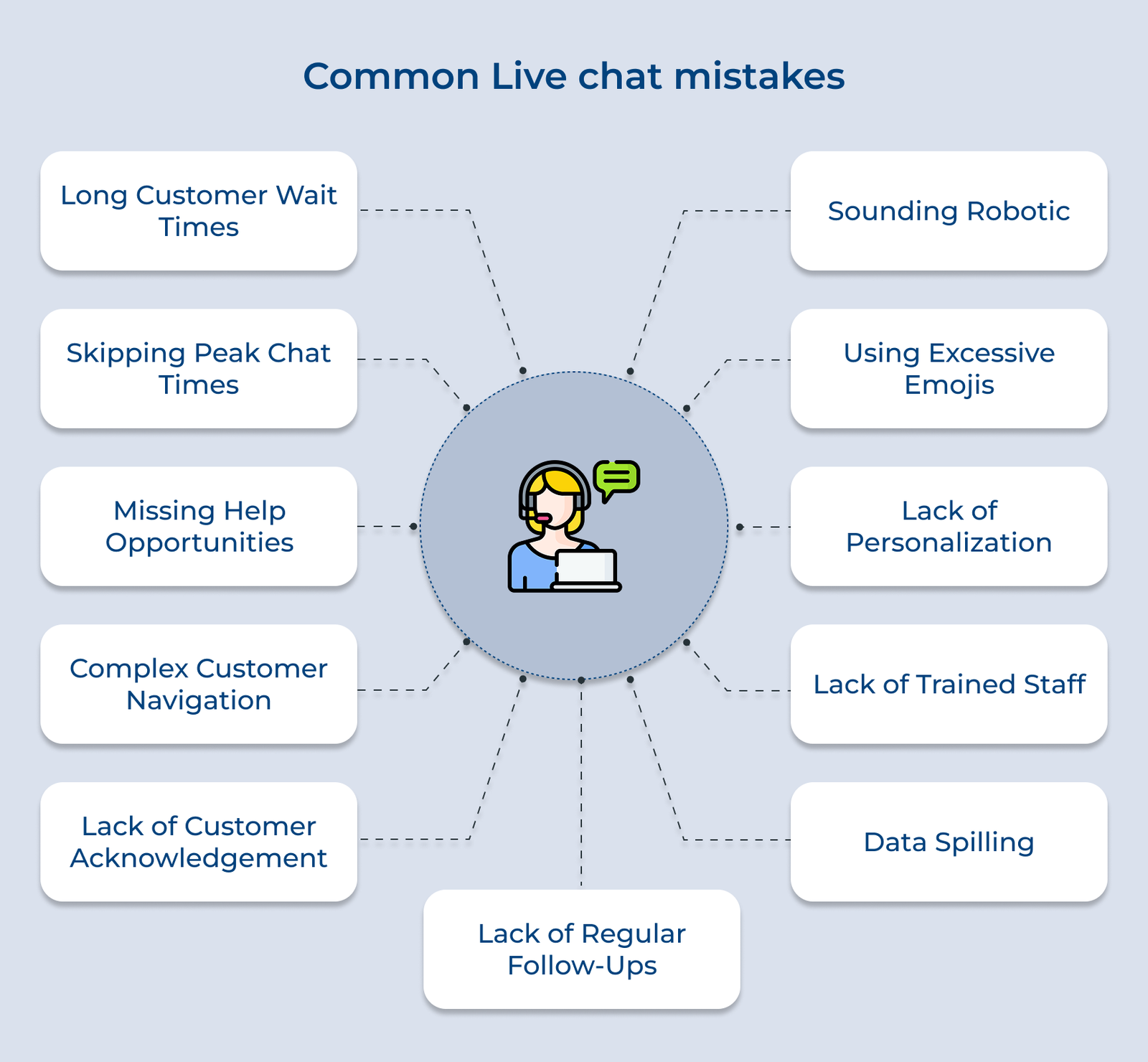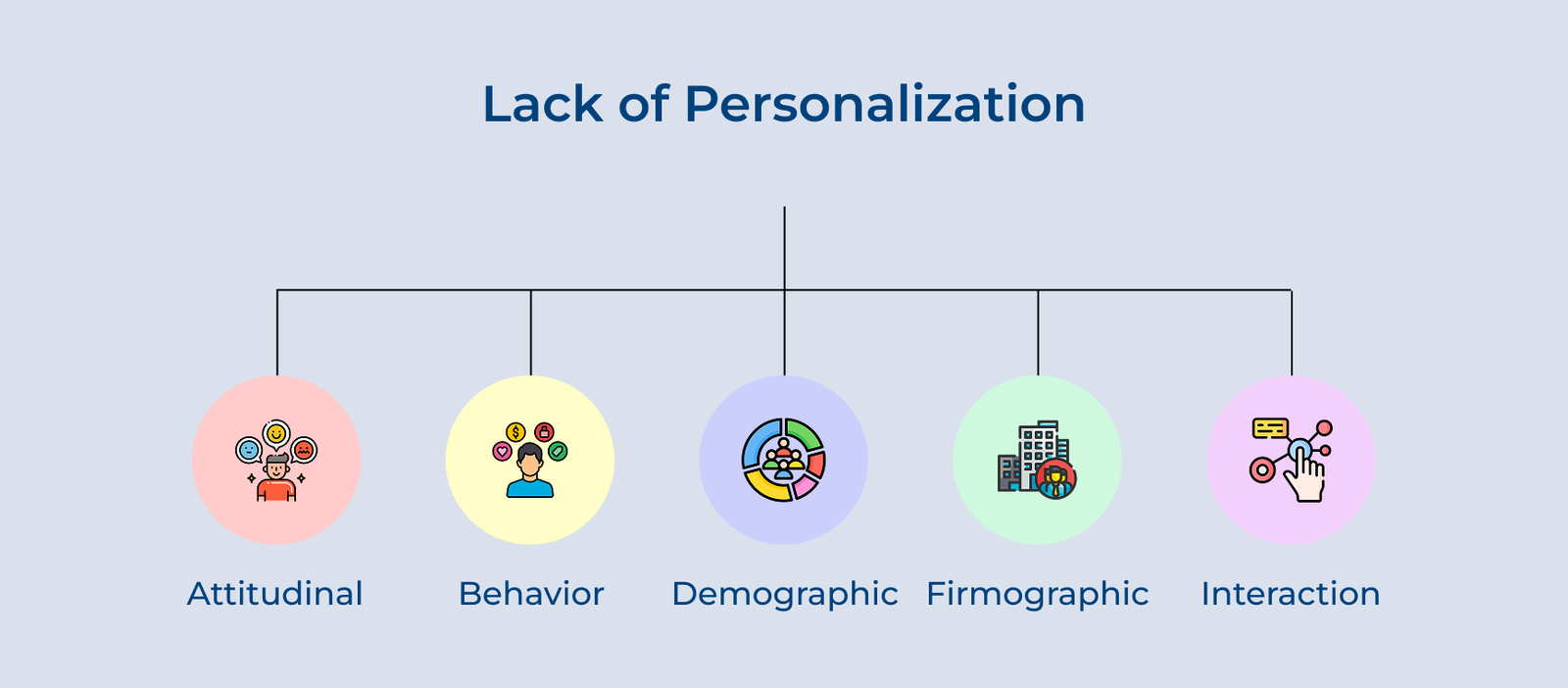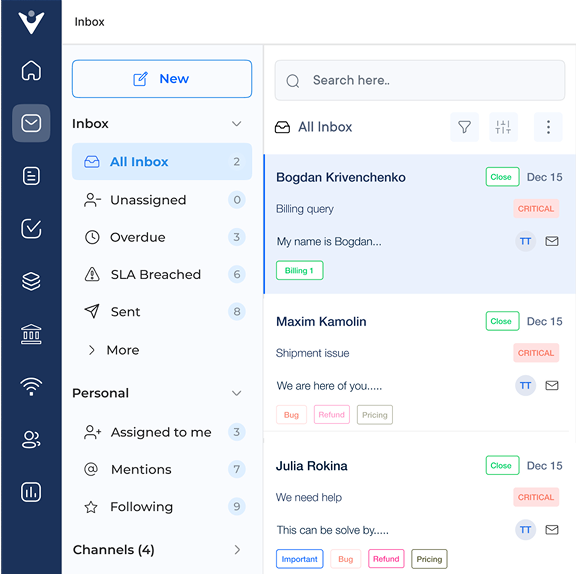If businesses avoid the mistake, they are more likely to create a positive and engaging customer experience that promotes loyalty. Personalized interactions make customers feel valued, leading to stronger relationships. One example is when a customer reaches out with a specific issue, only to get a generic response that does not address their concerns. It can leave the customer feeling frustrated, leading to potential dissatisfaction.
Best practices:
- Train agents to address customers by their names and tailor responses to their specific needs
- Implement chatbots with personalized scripts that can address customer queries while still maintaining a personal touch.
6. Lack of Acknowledgment for Returning Customers
Lack of acknowledgment for returning customers is a common live chat mistake that many businesses make. It is important to avoid the mistake because returning customers are valuable assets to a business. They have already shown loyalty to the brand and failing to acknowledge their return can make them feel unappreciated.
An example would be a returning customer reaching out to a business through live chat. They only receive a generic response without any recognition of their previous interactions with the company. It can make the customer feel like they are just another number to the business, rather than a valued and appreciated customer.
Best practices:
- Utilize customer relationship management software to track customer interactions, allowing agents to personalize responses.
- Train live chat agents to actively acknowledge and thank returning customers for their loyalty.
- Offer exclusive discounts or promotions to returning customers to show appreciation for their continued business.
7. You Sound Robotic
“You Sound Robotic” is a common live chat mistake that can negatively impact customer engagement and satisfaction. When live chat agents come across as too mechanical in their responses, it can create a barrier between them and the customer. Avoiding the mistake can lead to improved customer satisfaction and retention. Agents can build rapport by adding a personal touch to interactions and showing empathy towards customers.
An example would be when a customer expresses frustration and the agent responds with scripted responses that do not address the customer’s specific needs. It can make the customer feel unheard and dissatisfied with the service provided.
Best practices:
- Use conversational language and tone to create a more personalized interaction with customers.
- Ask open-ended questions to better understand the customer’s needs and provide more tailored assistance.
8. Using Excessive Emojis
Using excessive emojis in live chat can come across as unprofessional. It can be a common mistake that many individuals make when communicating online. While emojis can help add emotion to messages, overusing them can make the conversation difficult to follow. The conversation may even come across as childish or unorganized.
Avoiding the mistake can help maintain a more professional tone in the communication and can ensure that the message is clear. Let’s consider you are having a conversation with a potential employer or client where you used excessive emojis. It could make you appear less serious or competent in their eyes.
How to overcome:
- Limit the use of emojis to one or two per message to add emphasis or emotion to the text.
- Use emojis sparingly in professional settings or when communicating with someone you are not familiar with.
- Take the time to read over the messages before sending them to ensure that the use of emojis is appropriate for the context.
9. Lack of Trained Staff
“Lack of Trained Staff” is one of the common live chat mistakes that many businesses make. When companies do not have properly trained staff managing their live chat, it can lead to poor customer service. Avoiding the mistake is crucial for businesses as trained staff can provide timely responses to customer inquiries, increasing customer satisfaction.
An example of the mistake would be a customer asking a specific question about a product. An untrained staff member responds with incorrect information. It leads to confusion and customer frustration.
How to overcome:
- Invest in detailed training for staff members to ensure they are equipped with the necessary skills to manage conversations.
- Implement regular quality assurance checks to monitor staff performance and provide feedback for improvement.
10. Creeping Customers with Data-Spilling
“Creeping Customers With Data-Spilling” may seem like a harmless mistake, but it can have serious consequences for the business. The common live chat mistake occurs when agents accidentally reveal too many details about a customer or their browsing activity. It might make them feel uncomfortable and invaded.
An example could be an agent referencing a customer’s recent Google search or past buying history without their consent. It can make the customer feel like their every move is being watched, leading to a loss of trust and a negative customer experience.
Best practices:
- Train agents on the importance of customer privacy and data protection. Make sure they understand the boundaries of what information can and cannot be shared during interactions.
- Implement data encryption and security measures to ensure that customer information is kept confidential.
- Encourage open customer communication with customers about their privacy concerns. Offer transparent policies on data collection and usage.
11. Failing to Take Regular Follow-Ups After Support Process
Failing to take regular follow-ups after the support process is a common live chat mistake. It can result in customer dissatisfaction and missed opportunities for upselling or cross-selling. When a business avoids following up with customers after providing support, it risks leaving them feeling unappreciated or forgotten. Businesses may miss out on the chance to gather valuable feedback by not following up which could help improve the offerings.
An example of a mistake would be a customer reaching out to the support team with an issue. The customer receives a resolution but never hears from the company again. Without any follow-up communication, the customer may feel undervalued and may be less likely to return for future purchases.
Best practices:
- Set up automated follow-up emails or messages to check in with customers after their support interaction.
- Provide opportunities for customers to easily provide feedback or suggestions following a support interaction.
- Train the live chat support team to prioritize follow-up communication and ensure that all customers feel appreciated.
Don’t Let Live Chat Mistakes Cost You Customers
Businesses must recognize the importance of live chat in interacting with customers and providing them with quick efficient support. Mistakes in implementing live chat can cost businesses valuable customers and harm their reputations. Businesses should invest in training their live chat agents, ensuring quick response times and using chatbots to handle repetitive inquiries.
Taking the above-described strategies can help businesses improve customer satisfaction, increase retention rates and drive more revenue. Remember, live chat is a powerful tool that can greatly enhance the customer experience, but only if used correctly. If one needs to harness the full potential of live chat, they have to be mindful of common mistakes.














